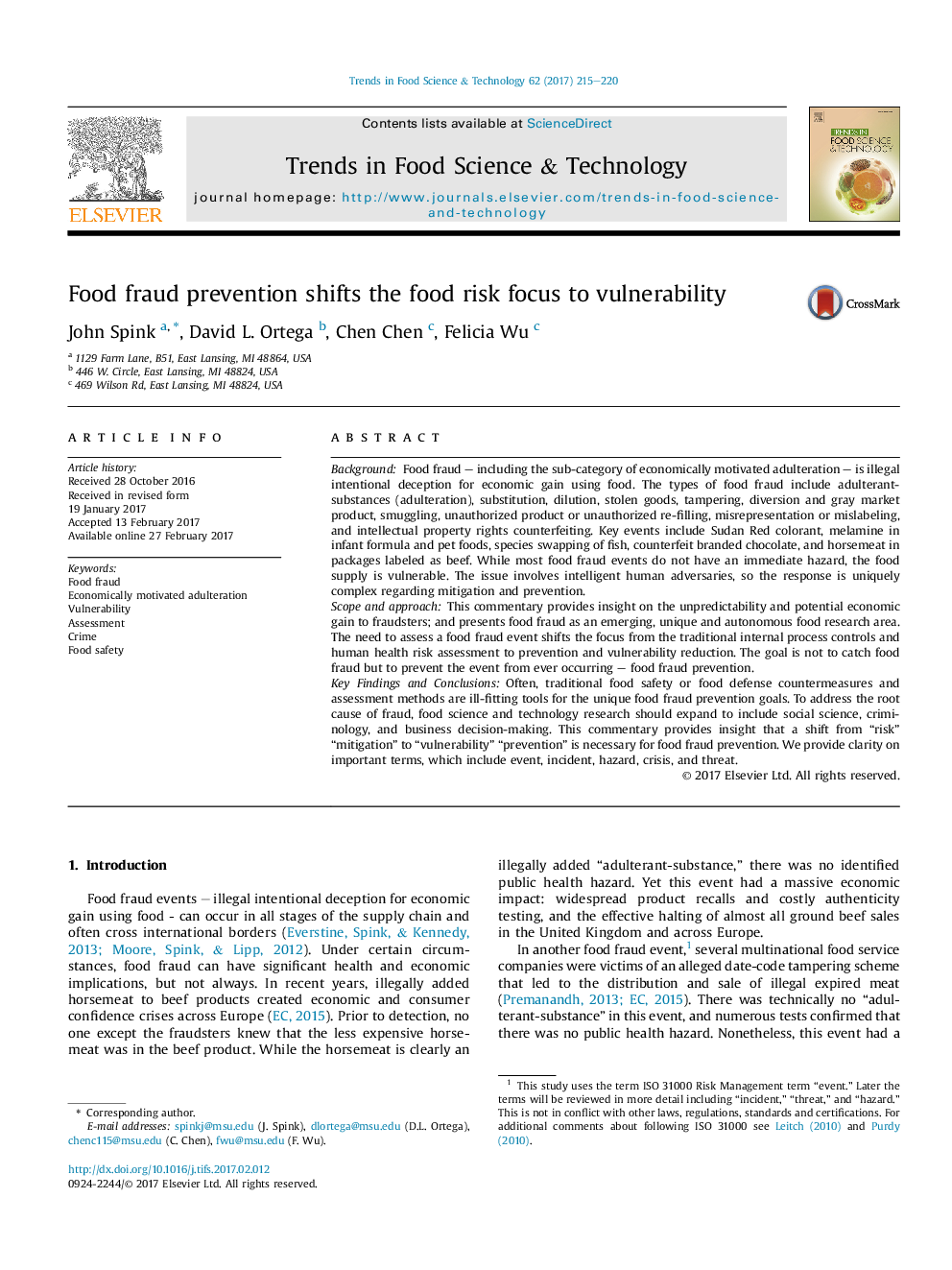| Article ID | Journal | Published Year | Pages | File Type |
|---|---|---|---|---|
| 5523660 | Trends in Food Science & Technology | 2017 | 6 Pages |
â¢Food fraud is an emerging area of concern for food industries and agencies.â¢There are new - or evolving - unique compliance requirements.â¢The complex vulnerability requires an interdisciplinary approach.â¢The most efficient focus is prevention, not intervention and response.â¢Thus, there is a need to shift focus from risk mitigation to vulnerability prevention.
BackgroundFood fraud - including the sub-category of economically motivated adulteration - is illegal intentional deception for economic gain using food. The types of food fraud include adulterant-substances (adulteration), substitution, dilution, stolen goods, tampering, diversion and gray market product, smuggling, unauthorized product or unauthorized re-filling, misrepresentation or mislabeling, and intellectual property rights counterfeiting. Key events include Sudan Red colorant, melamine in infant formula and pet foods, species swapping of fish, counterfeit branded chocolate, and horsemeat in packages labeled as beef. While most food fraud events do not have an immediate hazard, the food supply is vulnerable. The issue involves intelligent human adversaries, so the response is uniquely complex regarding mitigation and prevention.Scope and approachThis commentary provides insight on the unpredictability and potential economic gain to fraudsters; and presents food fraud as an emerging, unique and autonomous food research area. The need to assess a food fraud event shifts the focus from the traditional internal process controls and human health risk assessment to prevention and vulnerability reduction. The goal is not to catch food fraud but to prevent the event from ever occurring - food fraud prevention.Key Findings and ConclusionsOften, traditional food safety or food defense countermeasures and assessment methods are ill-fitting tools for the unique food fraud prevention goals. To address the root cause of fraud, food science and technology research should expand to include social science, criminology, and business decision-making. This commentary provides insight that a shift from “risk” “mitigation” to “vulnerability” “prevention” is necessary for food fraud prevention. We provide clarity on important terms, which include event, incident, hazard, crisis, and threat.
